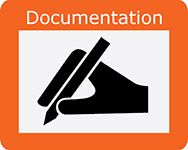Chiropractic Documentation Fast and Compliant Notes

Fast and Compliant Notes for Chiropractic Practices Documenting cases quickly while remaining compliant with both insurance and government regulations seems like an impossible task. Especially when you factor in the images, forms, tests and more that go into proper documentation. Fortunately, it’s now possible to compile all the information you need, quickly, from a single screen. Watch this webinar to find out how! Read the transcript: Reuven: Welcome to Genesis’s webinar on compliance. Today we’re gonna talk about the travel card. My name is Reuven Lirov. I am currently the Chief Growth Officer and I work with over 500 practices and more than 1,600 practice staff across multiple specialties. My team posts more than $10 million in monthly insurance payments, focusing on finding ways to accelerate practice cash flow, improve compliance, and foster office staff teamwork. In the past 5 years, our clients have seen an average revenue growth of over 186%, patient visit growth of over 141%, and an 86% increase in patient visit compliance. So let’s get right down to it. Really what we wanna talk about today is the need to be able to complete and review documentation as quickly as possible. And this is a need that comes up all the time. Anytime we talk to some who is struggling with their current solution opening a new office, expanding their office and needs something that’s more scalable, the biggest problem they have is that they wanna spend more time with their patients, less time in a solution, and they wanna still stay 100% compliant with state insurance and federal requirements. So it’s a really difficult problem to solve, and each issue plays into the other. So this problem is really critically important because documentation obviously is a critical component to practice success. You know, one thing that happened to me a lot was as an EMT was when I was in college, we would constantly have to be reminded of the need for very, very clear documentation, especially when you’re dealing with outside patients where, you know, if you didn’t write it down, it didn’t happen. And that was the go-to phrase that we would give to new recruits, “If you if you didn’t write it down, it didn’t happen.” And even though you’re trying to do that, the goal is to have notes that take seconds. You wanna be able to spend most of your time interacting with your patient and a fraction of that time documenting so that all of your patient interactions are maximized. Because at the end of the day, it’s all about making sure that that patient is getting better and that patient is getting so much better that they’re feeling compelled to bring in their family, and their friends, and anyone else that they know that may be suffering or need your help. So even though we understand what this problem is, we understand why it’s important, there are still so many practices out there that are struggling, and so it’s obviously a difficult problem. And so compliant notes really struggle to be fast notes. That’s not an easy problem to solve, and if it didn’t matter how specific the notes were to anyone but yourself, you would do what a lot of providers do today, which if you ask them, you know, they’ll admit to it, they won’t be happy about it, but the reality is a lot of them scribble notes down. And if that’s you, don’t worry about it, we’re here to help. You know, a lotta the time I hear things like, you know, scribbling things down, stuffing them into a paper file, and spending the majority of your time with your patient, which is what you should be doing, really. But you really don’t have a choice because, you know, you need to have a compliant note and you need to have a referring patient. And so obviously this won’t work. You know, you gotta be able to finish your notes quickly, but you still have to stay compliant. And, you know, if that’s not something that you’ve struggled with recently, statistically speaking, every practice, if it’s in business more than five years will eventually get audited by a state board or a regulatory agency like an insurance company, something like that. So get ready for that. And it’s…you know, if you haven’t done it yet, it’s time to get that house in order. So documentation often spans more than just soap notes. So when you think about documentation, we have to think about the entire patient’s care. And so the soap note is one piece of that, your subjective objective ADL assessment and plan, but there’s also images, there’s forms like intake forms, and verification of benefits, and medicare forms, lengthy tests, and so much more, especially if you’re dealing with a multi-specialty practice where you’re bringing in, you know, different specialties that compliment your own. So the question is really, what’s our approach? You know, the reason why we’re so successful in working with our practices is because we look at the practice the way you look at your patients. Instead of trying to solve an individual symptom, which is I spend too long documenting, we really wanna understand the root cause of the problem. So we wanna look at this really in five areas. We wanna talk about the patient’s travel card, we wanna talk about that patient’s history, wanna talk about billing, wanna talk about personal notes, we wanna talk about documentation. A lotta the time I hear things like, “Well why do I need to talk about billing if we’re talking about documentation? Why do I need to talk about the patient’s history or even scheduling when I’m talking about documentation?” And so when you try to take into account the issues surrounding documentation and trying to get patients better, if you’re not able to connect your billing the rest of your documentation to your soap note, including
The Secret to Better Practice Management Decisions

Learn how to use metrics for better decision making! Metrics are what you need. When it comes to managing your practice, it’s often difficult to make informed, timely decisions without data. That’s because practice owners are frequently unsure of which performance indicators they should measure, or even how to get started. Or, they ignore the data and operate on instinct. Analytics, however, take the guesswork out of practice management, while simplifying the data so it can be easily understood. These tools provide increased efficiency and effectiveness, for improved decision-making ability.
Patient Education for Chiropractic Practices

Complications Does the complexity of Dr. Ben’s patient education needs require a complicated solution? “It’s nice to be in someone else’s restaurant for a change,” Carmen remarked. “Someone else will have to do the cooking and the dishes!” “Rough day at the pizzeria?” “Not a bad day,” said Carmen, “but this time I’m being affected by new governmental medical regulations.” “What?” Ben was taken aback. His chiropractic office dealt with medical regulations frequently, but he couldn’t see how they could affect his wife’s pizza parlor. “We have to provide full nutritional information on our menus now.” Carmen sat back, waiting for Ben to share her outrage. “That’s a good thing,” Ben said. “People should know what they’re doing when they order that sausage and pepperoni thick crust with extra cheese.” “But that’s just the point! We don’t offer a couple dozen dishes the way this restaurant does. People can order their pizza with half a dozen different kinds of meat, twice that many vegetables, several different crust options, five different sauces, plus extra this or hold that — there are thousands of different combinations.” Ben was taken aback. “I hadn’t thought of that. But the research I’ve been doing on patient education has me convinced that people really do need full health information presented to them. My patients have to understand their diagnosis or disease, plus the treatment options we’re considering, as they relate to the specific part of the body where the patient is having trouble. That might have as many permutations as your pizza ingredients.” Their waiter arrived and Ben and Carmen ordered, pausing in their conversation to discuss their choice of dishes. Carmen jumped back in as soon as the waiter turned away. “Most people don’t even look at the menus, anyway — they know what kind of pizza they like. And they know that pizza is a bit of an indulgence. Maybe they just had a salad for lunch and plan to go roller skating after dinner. How is it my responsibility to police their health choices?”“It’s not about policing,” Ben objected. “It’s about giving people the information they need to make good choices. I see that the nature of your product makes it hard to provide the information you’re being asked to provide, and that’s true for my patient education situation, too, but that doesn’t make it any less of a good idea.” “Have you found a solution?” Carmen asked. “Maybe it’ll work for me, too.” Ben smiled. “I’ve found this amazing library of 3-D medical images and animations. It’s in the cloud, so we can all access them from every room–” “Unlike anatomical models or charts,” Carmen put in. Ben nodded. “We can email patients custom reports to help them keep up at home — and it’s fully integrated with that new software system we’ve been planning to implement. That means that it’ll fit into the workflow instead of changing it — and I know the whole team will be happy about that. It’s a simple, elegant solution to a complicated problem.” “It sounds perfect!” “I think it will be. Ah, here’s our dinner. Now we can see about coming up with a solution for your health education issue.” Does the complexity of Dr. Ben’s patient education needs require a complicated solution? Disclaimer: For HIPAA compliance, all characters appearing in this post are fictitious. Any resemblance to actual persons or actual events is purely coincidental.
Chiropractic Practice Management Decision Making

Wake Up and Smell the Coffee Dr. Ben might be able to make better decisions by tracking KPIs — but would it be worth it for practice management? “Do you really cut out coffee in the break room when cash flow is tight at the practice?” Carmen asked Ben, pouring him a cup of her special brew. Ben inhaled the aroma of freshly ground coffee beans brewed in a French press with filtered water. Their son was coloring at his end of the table while Ben and Carmen enjoyed a cup of coffee, the family’s usual evening ritual. “Why not? It’s a small thing that doesn’t affect the patients,” said Ben, breathing in the scent of coffee again. It would be just another minute before it reached the ideal drinking temperature. “I think that’s a mistake,” Carmen said firmly. “What happens when everyone is crazy busy all day and the waiting room is a zoo and Pam goes for her coffee break — and finds no coffee. You save yourself seven dollars, and you have a dissatisfied staff. That’s no bargain.” “So where should the savings come from if we need to scrimp a little bit? Sometimes we have to.” “There’s always something you can do to bring in a little more money in the short term,” Carmen said, swirling her cup. “You can call patients you haven’t seen in a while and invite them in, or offer a referral bonus or something.” “This isn’t like pizza,” Ben objected. “Plus, we don’t always have too little business when we have a cash flow issue.” Carmen frowned. “The solution to every problem in business is more customers. Cash flow for the pizzeria means we’ve had a slow week. It’s not that way at the practice for practice management?” “Not necessarily. There are a lot of things that can affect our income. No shows, for example. When people make an appointment but don’t show up, we lose that income. NFAs, no future appointments — those are the people who may have been coming regularly and providing predictable revenue, but then they leave without making another appointment.” “Recurring revenue is good,” Carmen agreed. “But when you expect it and it doesn’t happen, it can take a while to make up the difference.” “There’s also payment. When people order a pizza, they pay for it. We have accounts that are 60 or 120 days late, plus insurance payers who are slow or even dispute the claims.” “Hold on!” Carmen grabbed a piece of paper and a crayon from Jonathan’s hoard. “Can I have this one, sweetie? Thanks. Okay, Ben, let’s get this figured out. Things affecting your income include no-shows, NFAs, slow pays, and payers like insurance companies that aren’t always predictable. It’s all practice management.” Carmen drew a neat chart with the crayon. “Wait, I think the insurance companies need their own column. You need to keep track of which payers are fast and cooperative and which aren’t. You also need to know how many claims you have and when there’s a significant backlog so you can respond to it. Maybe also which specific procedures cause problems with which payer.” Ben admired the chart. “Looks like that about covers it.” Carmen sat back and admired her work. “I think these are your KPIs. Your key performance indicators that let you see if you’re on track and if you need to trim your costs a bit.” “Where will these numbers come from?” Ben asked. “You’re acting like I should know these things.” “You should,” Carmen shot back. “You have to know your numbers to make the right decisions at the right time. When you know your numbers inside and out, you can make strategic decisions wisely. Maybe there are vendors you can safely put off paying if you know that you have money coming in soon, or maybe you can put a staff member to work getting those overdue accounts cleaned up.” Carmen returned the crayon to their son. “Either way,” she went on, “you won’t have to mess with the coffee!” Ben drained his cup. He could see where Carmen was coming from. Her plan sounded sensible. But he wasn’t sure it would be worth taking time away from what he did best — patient care — to mess with all those numbers. Dr. Ben might be able to make better decisions by tracking KPIs — but would it be worth it for his practice management? Disclaimer: For HIPAA compliance, all characters appearing in this post are fictitious. Any resemblance to actual persons or actual events is purely coincidental.

